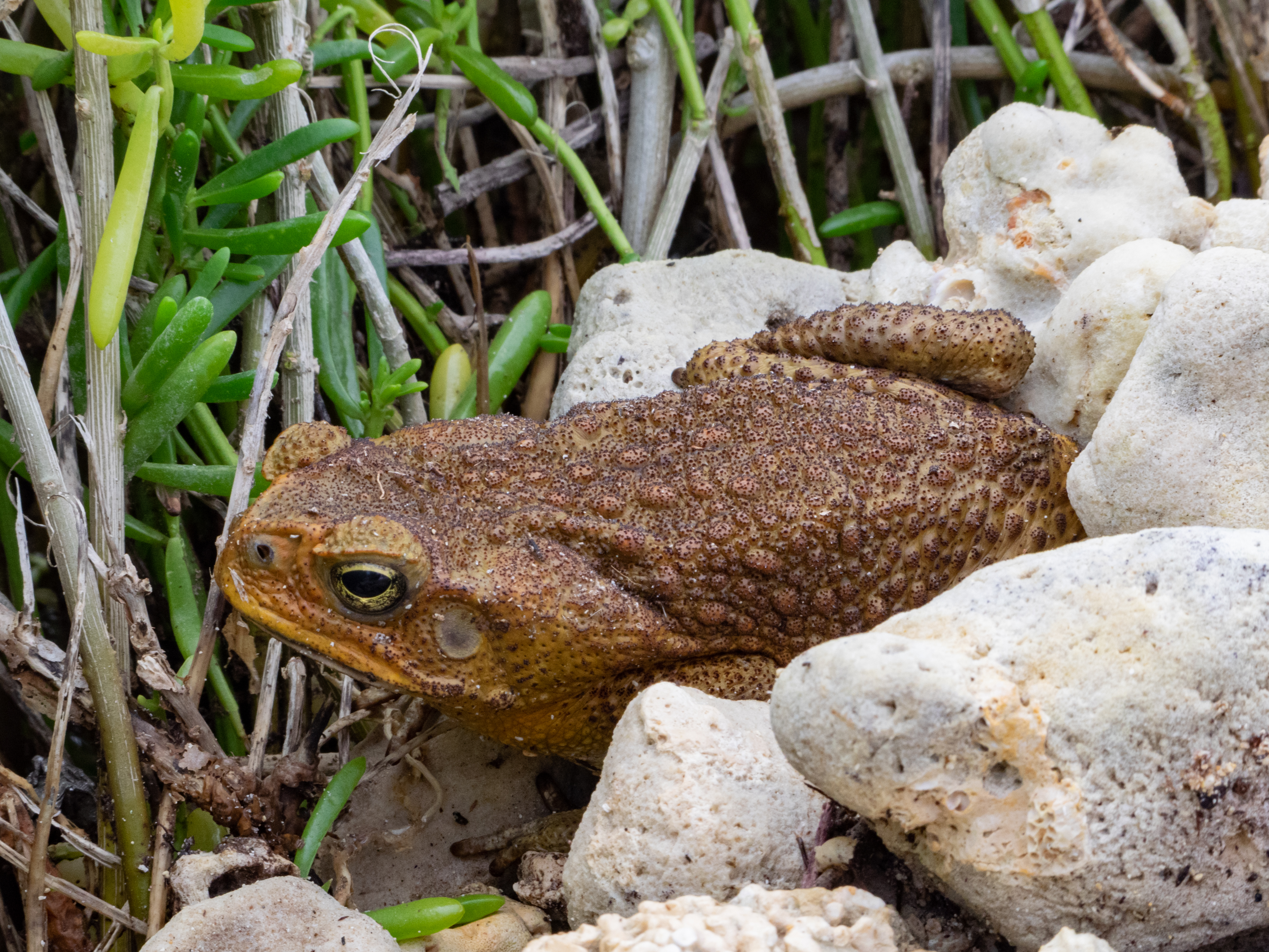Your dog is salivating profusely, shaking its head and whimpering loudly…What should you do?? Don’t hesitate! Take your dog to a veterinarian immediately!!
Maybe you’ve seen the nocturnal culprit here on base? When threatened, it inflates its body and lifts itself up off the ground to appear larger to a potential predator. Bella the dog probably wants to play with it, but as soon as she goes in for a sniff—oops, big mistake!! There’s disgusting toxic ooze all over Bella’s snout.
The cane toad (Rhinella marina) poses a threat to our beloved pets as well as our native wildlife. Cane toads’ skin is toxic, and they have poison glands that secrete a milky white fluid called bufotoxin. Even the eggs and tadpoles are poisonous to most animals.
These aggravating amphibians are native to South and Central America but were introduced to various Caribbean and Pacific Islands, including Hawaiʻi, as a method of biological pest control. When sugar cane was being grown on the islands, the toads were introduced to eat cane beetles (Dermolepida albohirtum). Although the sugar cane industry is gone, the toads remained and are now considered invasive pests in most areas where they were introduced. Due to their voracious appetite and toxic skin, they continue to be dangerous to dogs and other animals.
They are the world’s largest toads and are prolific breeders, with females spawning 8,000 to 25,000 toxic eggs in gelatinous strands up to 60 feet in length in the water. The tadpoles are toxic to many animals too, but luckily when the toads metamorphose from tadpoles to juveniles, they lose their toxicity for a while as the glands that produce toxin in the adult toads are developing. During this time, they are vulnerable to predators such as birds, so only about 0.5% survive. Still, their life expectancy is 10 to 15 years in the wild, and the cane toad’s only natural predator in Hawaiʻi is the rat.
The typical cane toad diet includes beetles, centipedes, ants, and flies, but the abominable amphibians are also documented to enjoy an occasional nestling bird, rodent, slimy slug and lizard too! They may even eat the veggies in your garden and your pet’s food if left outside.
So, what do you do if you come across a cane toad? Chances are you won’t encounter a toad unless you’re out at night, but if you do simply avoid the bumpy beasts. If you choose to remove them from your yard to protect your pets, scoop them up with a shovel and/or wear gloves, and toss them to your neighbor’s yard (kidding—please don’t!). They’ll go about their business hunting cockroaches, mosquitos and centipedes, and for that we are truly grateful.
Signs your pet has been exposed to cane toad bufotoxin:
- extreme drooling or foaming of the mouth

- exceptionally red gums
- head shaking
- whining
- loss of coordination
- seizures
A cane toad relaxing near Hale Koa Beach.
Seek immediate veterinary care if your pet exhibits any of these symptoms!